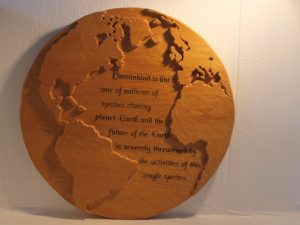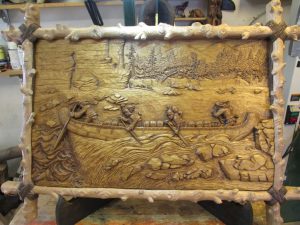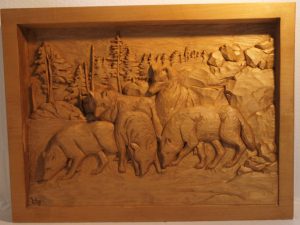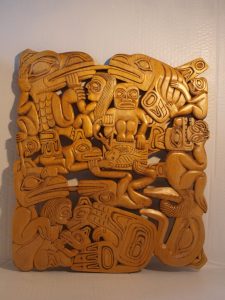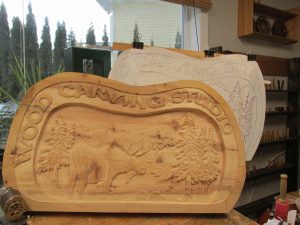
WERNER GROESCHEL'S WOOD CARVING
Carving Biography
I started carving about 20 years ago while on a camping trip with my family in beautiful British Columbia, Canada. I was sitting at the campfire, whittling away on a piece of fire wood with my pocket knife. The piece of wood was Red Cedar, which is a big tree, growing on Canada’s west coast.
The distinct Red Cedar smell coming off the wood and the feeling of the knife’s steel slicing through the wood started my love of wood carving that evening.
Back home I took a beginner’s carving course which taught the basics of relief carving and carving in the round.
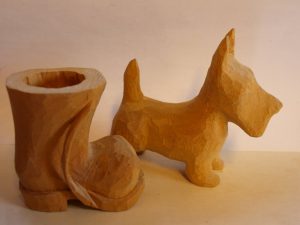
I started to buy a few chisels and made myself a couple of carving knives from used industrial-type hacksaw blades. Then I joined the local wood carving club. The rest is history, as the saying goes.
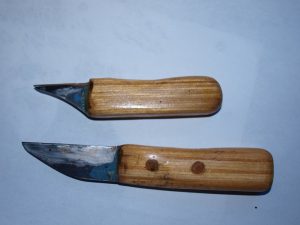
I am an outdoor enthusiast and nature lover. I spend a lot of time in the great Canadian outdoors, hiking, biking, cross-country skiing and canoeing. I also have a strong interest in environmental issues and have an educational background in the environmental sciences. I spent most of my professional career working in the environmental field. Naturally, many of my wood carvings have a nature and environmental theme.
For my carvings I only use wood from trees growing in Canada such as Poplar, Birch, Bass wood, Yellow and Red Cedar, Red Alder, Willow, Oak, Pine and some of the fruit tree woods.
Carving Studio
My carving work shop is converted one-car garage, attached to our house. Shortly after buying the house we replaced the garage door with a large bay window which allows for plenty of light to enter the room. Once that was done I constructed a sturdy work bench and a rack to hold the carving knives and chisels. Later I added a special wood carving stand with a height-adjustable work platform. Other items in the carving studio are a tool sharpening wheel and various sharpening stones, a magnification light for carving fine details and a light table for tracing designs onto paper.
The work shop also houses shelves full of wood pieces, containers filled with stains, oils and waxes, glues, brushes and anything else needed for carving.
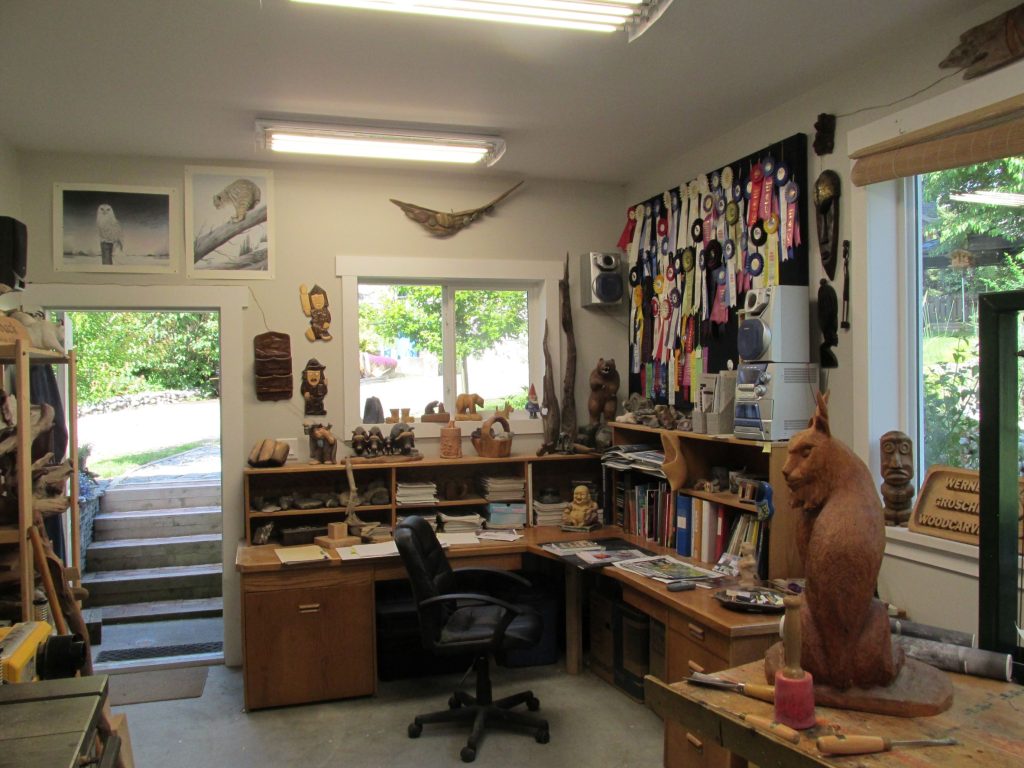
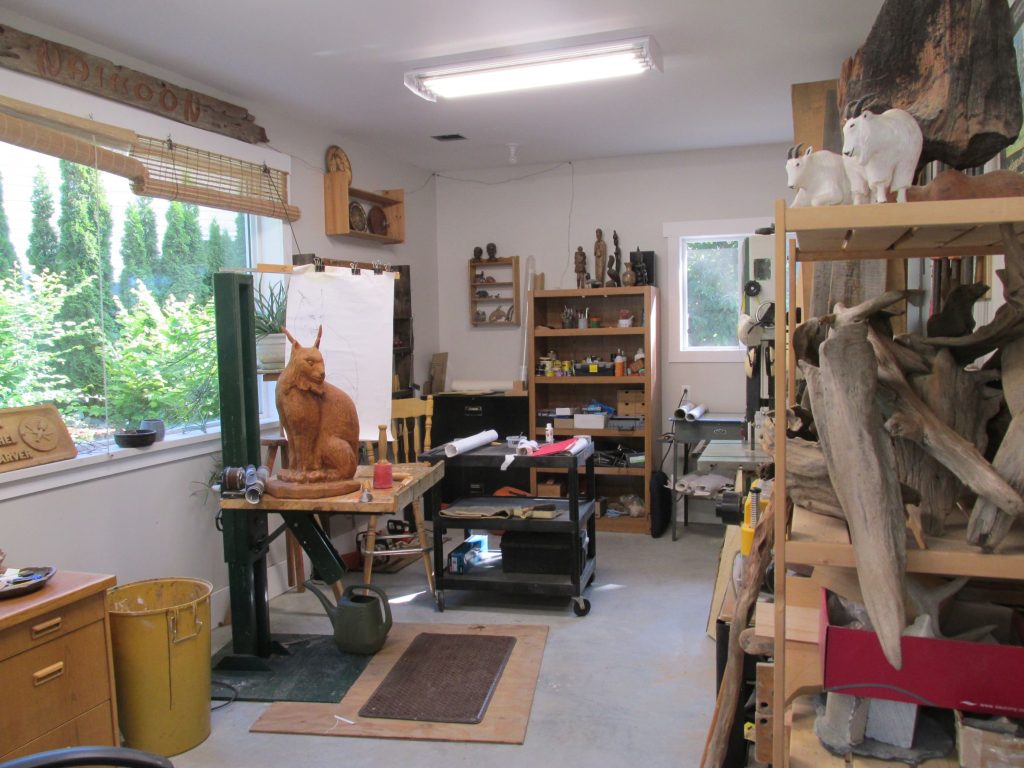
Over the years I have participated in numerous wood carving shows and competitions and have received a number of awards. In total I received 5 Best of Division, 1 Best of show and 1 Peoples’s Choice awards as well as many ribbons for 1st, 2nd and 3rd placings. All these awards are hanging on a wooden board in my carving studio.
Carving Process
Wildlife Carving-in-the-Round, Moose Carving
The Carving Process
A carving project starts with an idea of the subject to carve or a request from a friend or customer. 3 years ago I was asked by friends if I could carve a Moose Cow and Calf for them. They live on a large piece of land about 100 km west of Edmonton where Moose are regular visitors. One year they had a Moose cow and calf hang around near their house for quite a while which they really enjoyed.
As a first step for this project I went onto the Internet to look for Moose Cow & Calf pictures and reference material. I also looked through my own collection of wildlife calendars and wildlife books.
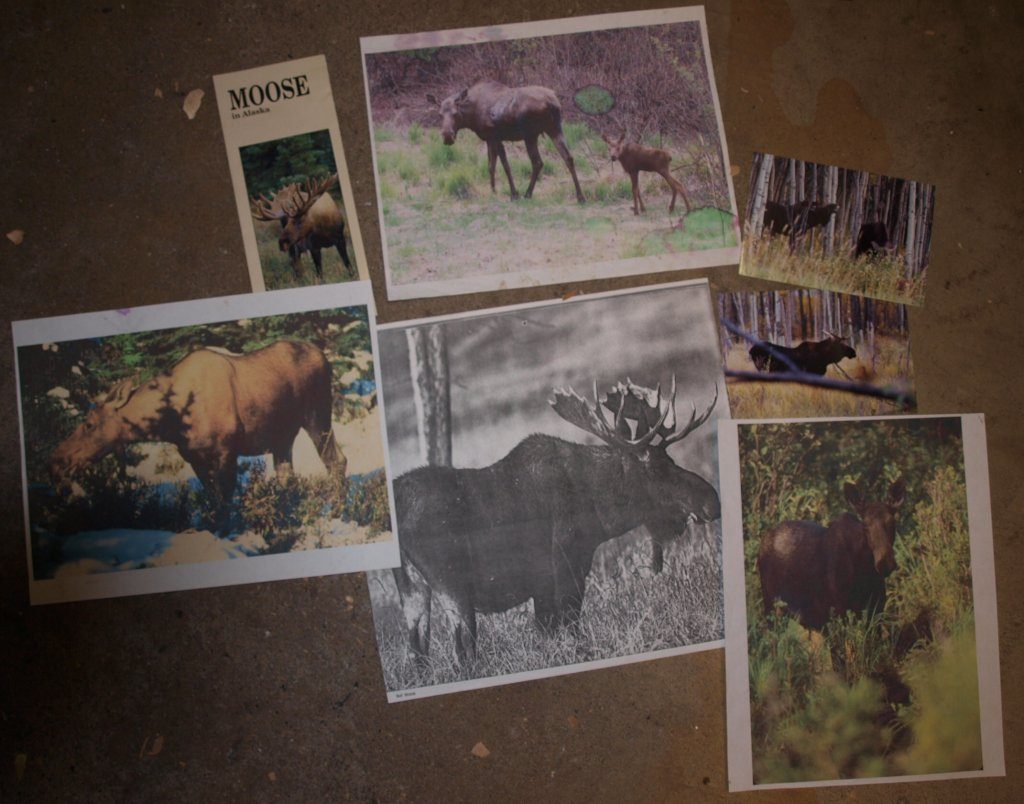
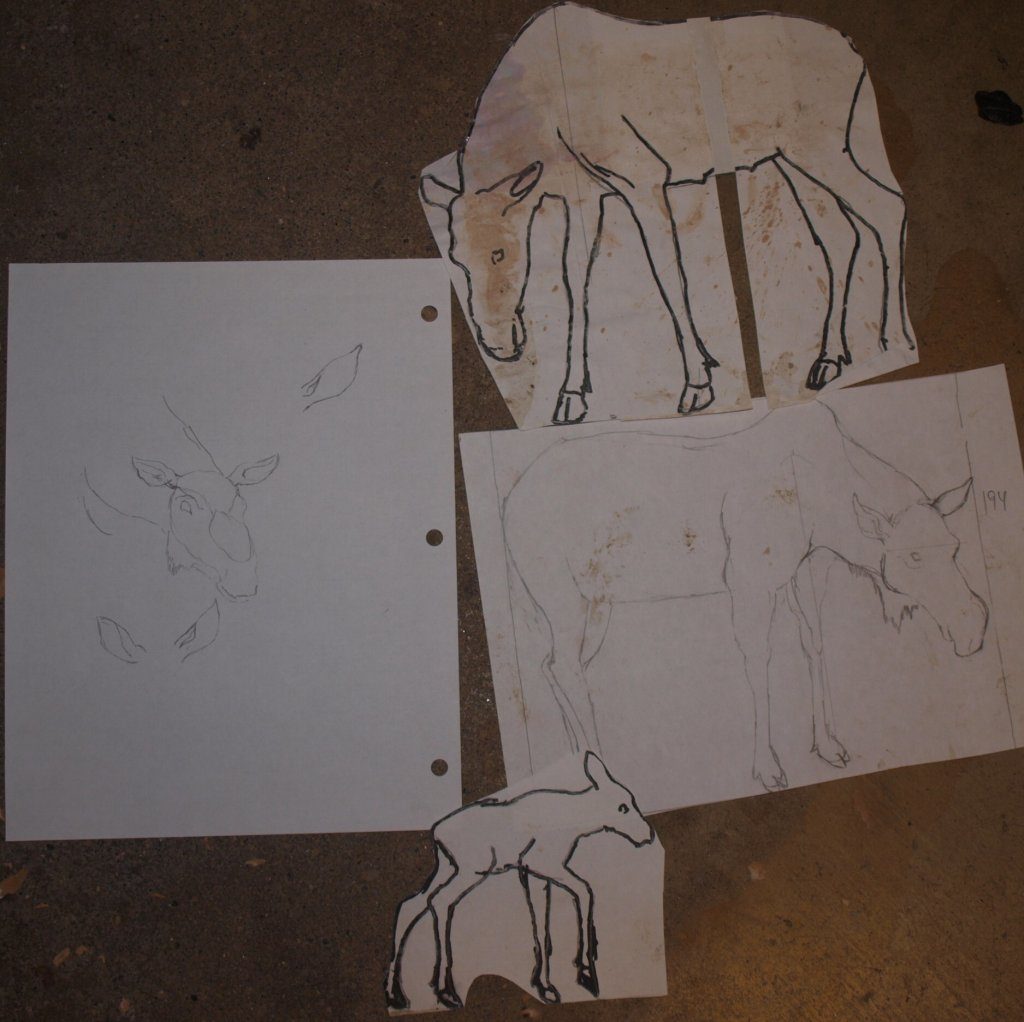
For a 3-dimensional carving it is useful to create a model first before proceeding to the actual carving. Creating a model in the exact size and shape of the final carving allows to get the shape, dimensions and details of the actual carving very close to what one had imagined.
Clay or Plasticine can be used for making the model. First you have to make a skeleton or armature to give strength to your model so it does not collapse or buckle under its own weight. For this I used a very strong, 2 mm thick iron wire. I made a clay model of the Moose Cow and Calf.
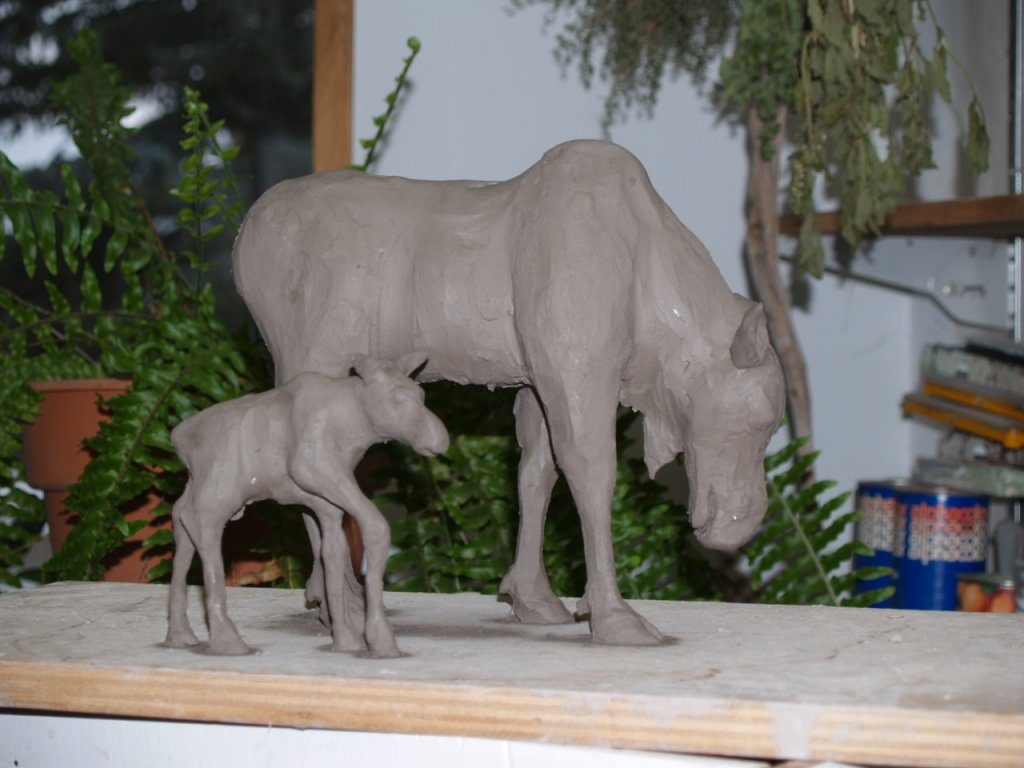
For wood I used Basswood, which is a soft wood that allows for carving even minute details, if required.
I traced the carving onto a piece of Basswood and used my band saw to cut out the rough shape of the calf and cow.
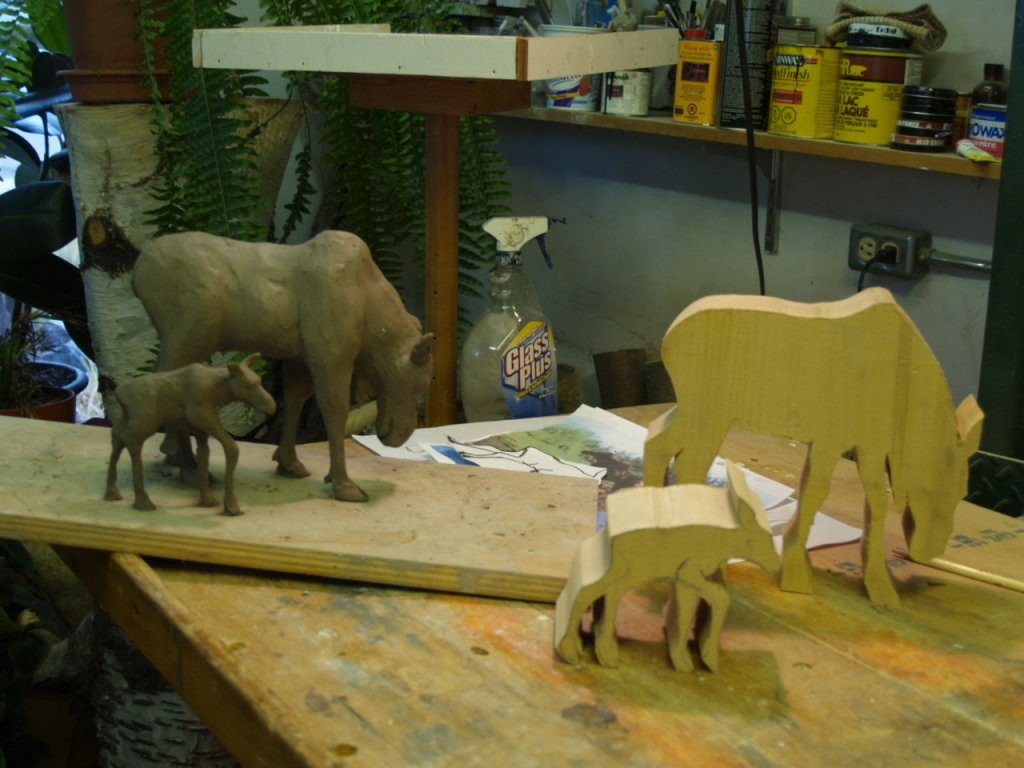
Using chisels and knives, I then started to carve the final shape and the details of the 2 animals. This took quite a bit of time, as one can imagine, especially the long and thin legs were difficult and precarious to carve.
Once I was happy with the final result I added a finish of stain and oil and selected a base on which the 2 animals were to be mounted. For the base I chose a piece of Red Alder.
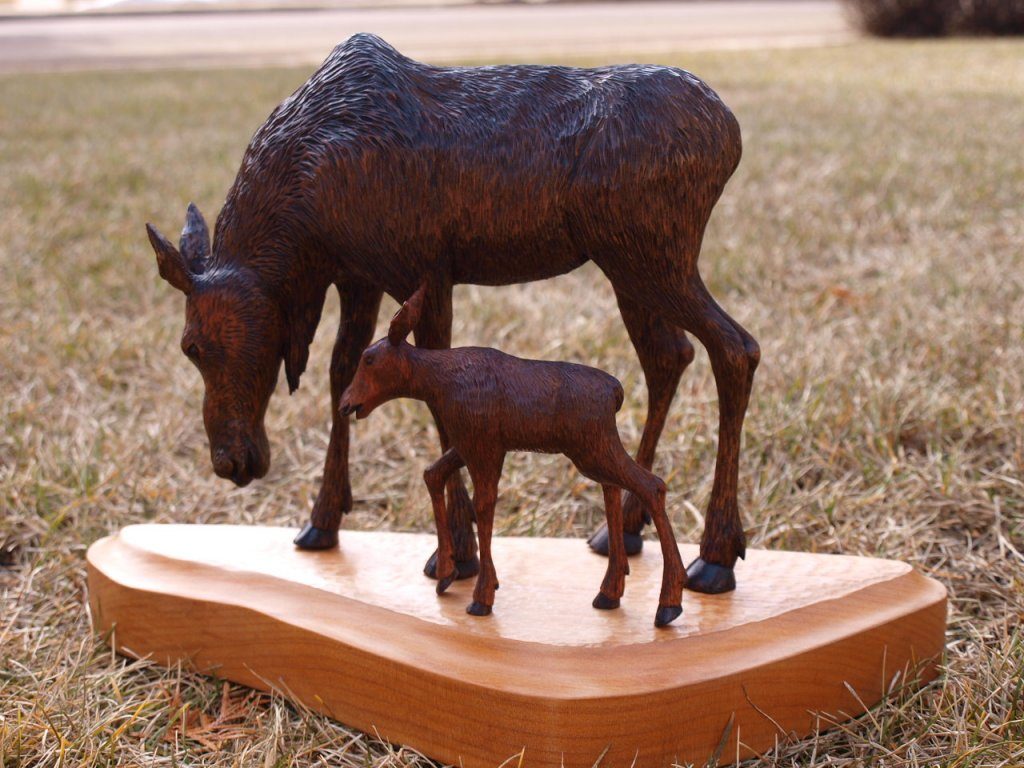
Shown here is the final result which my friends like a lot. It has a special place on the mantle of the fireplace in the living room of their house.
Copyright © 2022 Werner Groeschel’s Wood Carving
